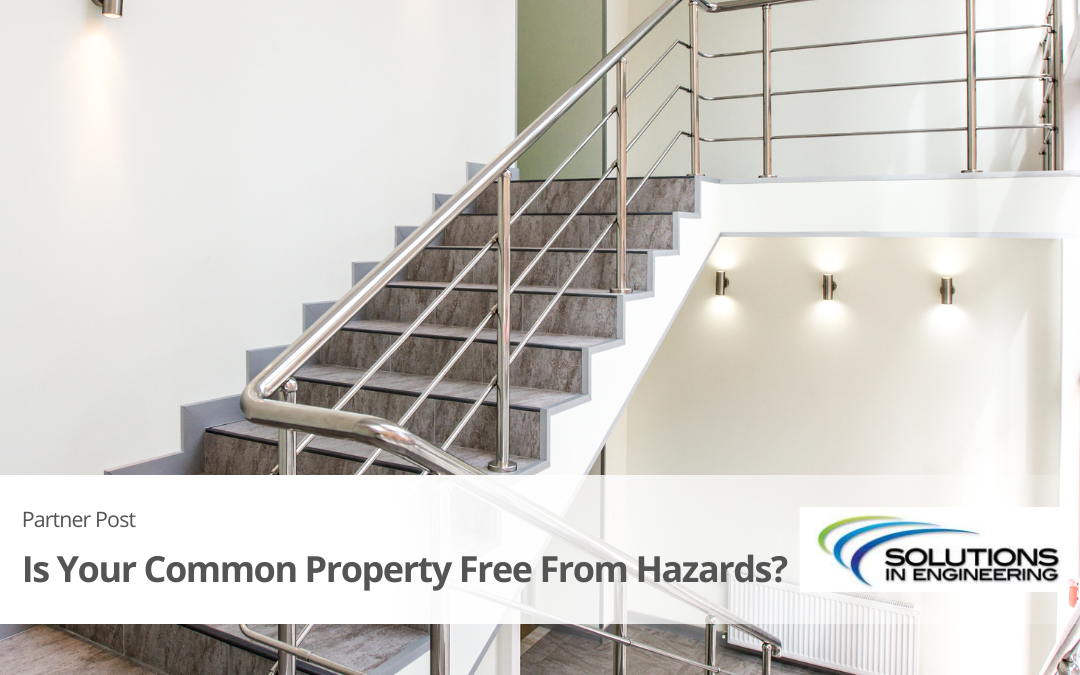Have you been spending more time at home recently? This month Solutions in Engineering outline what constitutes as a common property hazard and how to identify them to ensure your home is safe.
Since the pandemic arrived on our shores, more and more workers were forced to conduct business from their home as directed by the federal government to help us slow the spread of COVID-19. Many businesses have now adopted this setup as a permanent option for staff. In light of this increased presence in residential and mixed-use strata schemes, the likelihood of an injury occurring in these spaces has also increased dramatically.
Now more than ever is the time to ensure your common property has been assessed and made free from hazards. There are compelling risks driving the building’s need for safety obligations. They are the duty of care and the applicable compliance codes, legislation and Australian Standards that apply to buildings.
While compliance means you are taking steps to ensure your property is safe and protecting yourself from the liability of accidents and injury occurring, the reality is that your biggest risk is not a compliance risk- it is trumped by your duty of care risk.
Under the Work Health and Safety Act 2011 a Body Corporate or owner, must consider their duties under the law, especially regarding the health and safety of any person entering and egressing the common property.
Put simply, Bodies Corporate have a non-delegable duty to do all that is ‘reasonably practicable’ to ensure the health and safety of all occupants of their properties. This is a common law duty of care that is reinforced and echoed by multiple pieces of legislation.
Meeting these requirements warrants an active stance by a Body Corporate to be engaging and monitoring safety issues on the property. Engaging a professional company such as Solutions IE to take an active part in this process is a significant step towards mitigating the Bodies Corporate liability and prevent injury.
It is recommended that every Body Corporate motions and votes on getting a Safety Report completed every 12 months. When the committee agrees for the rectifications to be done and Body Corporate Manager then enlists the trade services required. This allows the Body Corporate to show that they have done as far as is reasonably practical to minimise risk on the common property.
Accidents will happen, if we all do our best to minimise the risk of harm, this will also assist the Body Corporate in getting insured for a reasonable amount. The same goes for poorly maintained properties. Well maintained building will have a positive impact on your premium. Insurers are now pricing strata to reflect the risk of the area. By maintaining the building assets, and having proactive maintenance will help prevent claims.
In summary, there is no piece of legislation that states a Body Corporate must do this or else. The best advice SIE can give is when something does go wrong, the judge will ask “what did you do to meet or exceed the Australian Standard?”. The Body Corporate can show they met compliance obligations under WHS Act 2011 and also ensure all reasonable measures were met under their duty of care.
Solutions in Engineering standards have been put in place as the minimum requirement to assist us in reducing harm to ourselves, owner’s, tenants, visitors and even trespassers who come onto the premises (if you would like to understand the legal requirement for this, please refer to Hackshaw v Shaw [1984] 155 CLR 614). If we all try to be proactive in managing our obligations this should help result in living in a safe and harmonious community.
